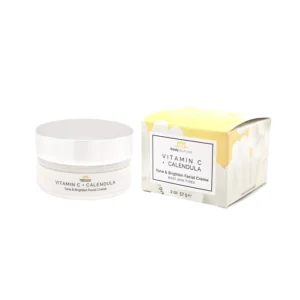
Introduction: Understanding Acne
Acne is one of the most common skin concerns in the world, affecting teenagers and adults alike. Whether it’s a few pimples or chronic cystic acne, the condition can impact your confidence and skin health. But the good news? There are real acne solutions that work.
What Causes Acne?
Before jumping into solutions, let’s understand the key causes of acne:
-
Excess oil (sebum) production
-
Clogged pores from dead skin cells
-
Bacteria (especially Propionibacterium acnes)
-
Hormonal fluctuations
-
Diet and lifestyle factors
-
Stress and inadequate sleep
Types of Acne
Knowing your acne type is crucial for finding the right treatment:
-
Whiteheads and Blackheads (Comedonal Acne)
-
Papules and Pustules (Inflammatory Acne)
-
Nodules and Cysts (Severe/Cystic Acne)
Best Skincare Routine for Acne-Prone Skin
1. Gentle Cleansing
Use a sulfate-free, non-comedogenic cleanser twice a day.
Top pick: CeraVe Foaming Cleanser or La Roche-Posay Effaclar Gel Cleanser
2. Exfoliation (2-3x per week)
Choose chemical exfoliants with salicylic acid or glycolic acid to prevent clogged pores.
3. Targeted Serums or Treatments
Look for ingredients like:
-
Benzoyl Peroxide (kills bacteria)
-
Salicylic Acid (unclogs pores)
-
Niacinamide (reduces inflammation and sebum)
-
Retinoids (promotes cell turnover)
4. Moisturizer
Never skip moisturizer—even oily skin needs hydration.
Use oil-free, non-comedogenic products.
5. Sunscreen
UV rays can worsen acne scars. Use a broad-spectrum SPF 30 or higher.
Natural and Home Remedies for Acne
1. Tea Tree Oil
Has anti-inflammatory and antimicrobial properties. Use diluted with a carrier oil.
2. Aloe Vera
Soothes and hydrates irritated skin.
3. Green Tea Extract
Rich in antioxidants and reduces sebum production.
4. Apple Cider Vinegar
Can help balance skin pH but must be diluted (use with caution).
Diet and Lifestyle Changes
-
Avoid high-glycemic foods (sugary snacks, white bread)
-
Eat more zinc-rich foods (pumpkin seeds, lentils)
-
Include omega-3s (salmon, walnuts, flaxseed)
-
Stay hydrated
-
Get at least 7-8 hours of sleep daily
Over-the-Counter (OTC) Treatments
Look for products with:
-
2.5%-5% Benzoyl Peroxide
-
0.5%-2% Salicylic Acid
-
Sulfur or Alpha Hydroxy Acids (AHAs)
Prescription Acne Treatments
If OTC treatments don’t work, consult a dermatologist for:
1. Topical Retinoids (e.g., Tretinoin, Adapalene)
Increase cell turnover and prevent clogged pores.
2. Oral Antibiotics (e.g., Doxycycline, Minocycline)
Reduce inflammation and bacterial growth.
3. Hormonal Therapy (e.g., Birth Control Pills, Spironolactone)
Effective for women with hormonal acne.
4. Isotretinoin (Accutane)
Powerful treatment for severe cystic acne. Requires close medical supervision.
Professional Acne Treatments
-
Chemical Peels
-
Microneedling
-
LED Light Therapy (Blue light targets acne-causing bacteria)
-
Laser Resurfacing
-
Extraction Facials
Acne Scar Solutions
Once active acne is controlled, you can treat scars with:
-
Microneedling
-
Laser Therapy
-
Chemical Peels
-
Dermal Fillers
-
Subcision (for deep scars)
Prevention Tips for Clear Skin
-
Don’t touch or pop pimples
-
Clean your phone and pillowcases regularly
-
Remove makeup before bed
-
Manage stress with yoga, meditation, or exercise
-
Stick to a consistent skincare routine
-
Avoid heavy, greasy makeup
When to See a Dermatologist
See a professional if:
-
Your acne is painful or cystic
-
OTC products aren’t working after 8–12 weeks
-
You’re experiencing acne with excessive hair growth or irregular periods
-
Scarring begins to appear
Final Thoughts
Clear skin doesn’t happen overnight, but with the right skincare, treatments, and healthy habits, acne solutions is manageable. Everyone’s skin is different, so don’t be discouraged—find what works best for you and be consistent.


